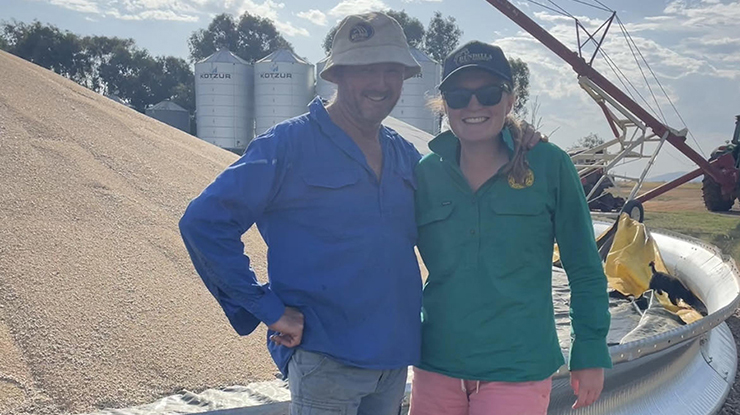Upskilling the next generation
29 May 2024
 Joe and Grace Corrigan
Joe and Grace Corrigan
Key points:
- Even for the most experienced producers, it’s important to refresh your knowledge.
- Respond to shifting market conditions by creating a balanced flock.
- Valuable insight can be provided for young producers by learning from industry professionals.
Riverina sheep producer Joe Corrigan attended a recent one-day BredWell FedWell workshop with his daughter Grace, an agricultural science student at Charles Sturt University.
They described the workshop as a useful refresher for even the most experienced producer while also helping those starting out to better understand the science behind on-farm decisions.
“A lot of what was covered was just revision for me, but it was also good to get that reassurance you’re still doing all the right things,” Joe said.
“However, Grace has just finished her second year of ag science and she loves the livestock side of things, so I wanted her to get a better understanding of why I do what I do on farm.”
Align breeding plans to profit drivers
A key element of the BredWell FedWell workshop is to help producers develop and customise a breeding plan aligned to their profit drivers.
For Joe, that’s been about trying to create a balance in his flock to respond to shifting market conditions.
“In the past few years, sheepmeat prices have gone through the roof and meat value became virtually half or more of our sheep enterprise,” he said. “I used to buy rams based on wool genetics, but the last few years I’ve changed the studs and started relying on Australian Sheep Breeding Values (ASBVs) to select rams for their higher meat values as well as their wool values.”
This approach has allowed the business to adjust now sheepmeat prices have fallen back, and wool is once again the main profit driver for their sheep enterprise.
“Genetics are a long game, so you need a balanced plan and then just try and stick to it. Understanding your profit drivers is so important – otherwise you’re just chasing your tail trying to catch up.”
Getting ram selection right
Using ASBVs to select rams has also been critical to identify robust genetics which can handle the everchanging seasons and climate.
“Rams will make the biggest difference to your flock and ASBVs are critical to finding the right sires to deliver well-rounded animals which not only produce the right staple length, the right micron, but also the right eye muscle depth and musculature to be a good all-round productive animal,” he said.
In recent years, Grace has worked closely with Joe’s stock agent to make ram selections based on ASBVs, so she was interested to learn more about this.
“Normally, I’d just look at the ASBVs and wouldn’t think about how they might look on the ram,” Grace said.
“Being able to take a sheet of ASBVs and then visually assess them against the physical characteristics of those rams was really interesting.”.
Understanding the feed curve
BredWell FedWell’s focus on maximising the value of the feed curve gave Grace a better understanding of many of her father’s on-farm decisions.
“Dad and I graphed out our feed supply and demand together, which let us see where we had excess feed and where we needed supplement feeding,” Grace said.
“This year, I want to have a conversation about where we’re going to move the weaners because in previous years, we’ve had trouble after they’ve been weaned. I can now see how feed requirements might be playing a role, so I want to talk to Dad about how we’re going to manage it and whether we should look at containment feeding or putting them out on pasture. “
Putting on-farm decisions in context
Joe said while Grace had seen him implement many of the things discussed at the workshop, both agreed having a professional explain the reasons behind these day-to-day decisions provided a lot of valuable insight for the young producer.
“What I’m seeing on the farm now makes a lot more sense, so when I’m having conversations with Dad and helping manage the flock, I understand a lot more about what is driving those decisions,” Grace said.


